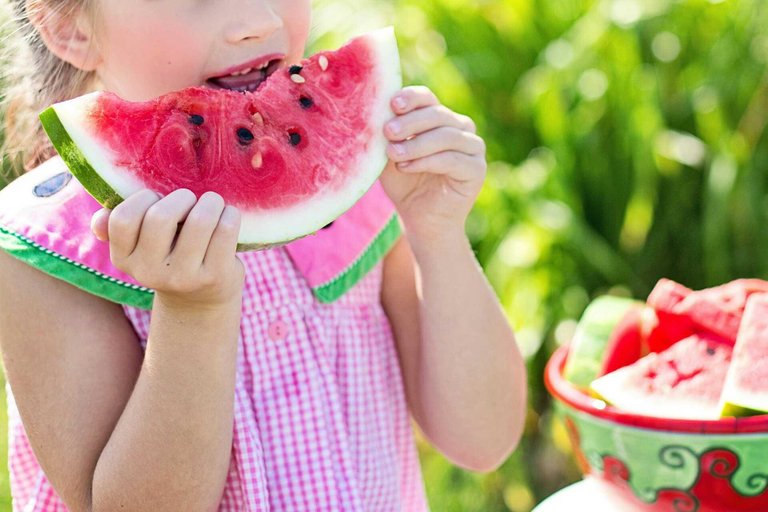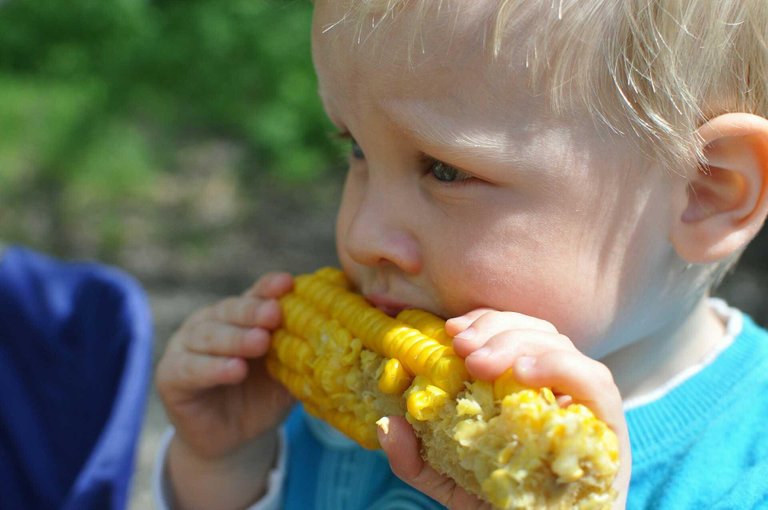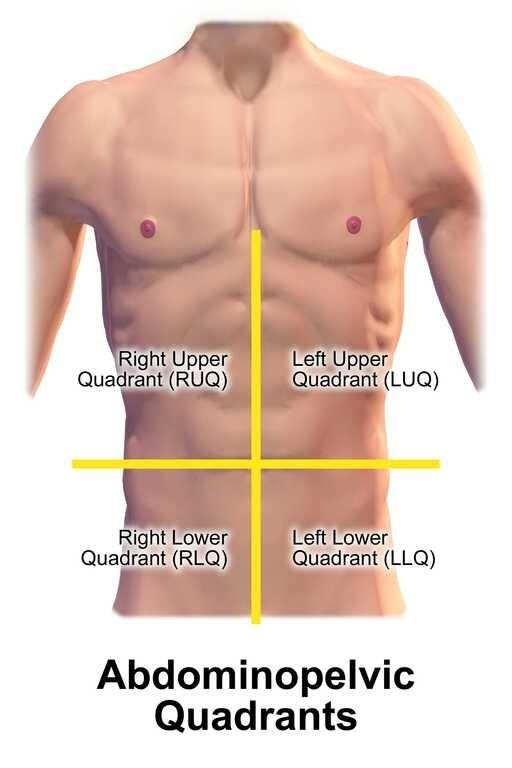If you're someone who likes food like me, food time might just be one of the best time of the day for you. But have you ever wondered what happens to your food after consuming it? Or maybe you're among the few who do not care. A lot of things happen from the moment you eat your food to the time you have to visit the toilet and pass it out as waste. These processes that take place in between is what is called digestion.

What is digestion?
For the food we eat to be utilized by the body, it needs to be broken down into smaller soluble particles that the body can easily absorb and transferred to body cells where they are used up. The teeth grind the food into smaller particles and enzymes also acts on the food chemically. All these processes of making the food available for utilization by the body is what is referred to as digestion. Digestion is of two types depending on how the food is broken down:
- Mechanical digestion which involves the physical breakdown of food into smaller particles.
- Chemical digestion: which of course involve the Chemical actions of the enzyme in further breaking down food particles.
The process of digestion
The process of digestion sometimes starts before you actually eat the food. This is known as the Cephalic phase in digestion. Either you are thinking about your favorite food or perceiving the aroma of a great meal or seeing a delicious meal or probably having a bite of your best food; all these can be responsible for the cephalic phase preparing your body for digestion. It increases appetite and stimulates the brain and cause the stomach to secrete gastric juice. It is reported that this phase of secretion normally accounts for about 20 percent of the gastric secretion associated with eating a meal.[ref]
 CC0 Creative Commons: pixabay
CC0 Creative Commons: pixabay CC0 Creative Commons: pixabay
CC0 Creative Commons: pixabay
Digestion starts from the mouth when the teeth break down food into a smaller particle to increase the surface area for effective Chemical digestion. The food is mixed with saliva in the mouth which helps moisten and soften it. The tongue also aids in the process by working together with the teeth making the food into a ball-like form known as bolus. Saliva contains the digestive enzyme Amylase. Amylase act as a catalyst in the hydrolysis of starch to sugars. The amylase present in the saliva is known as Ptyalin. Ptyalin breaks down the starch content into maltose, a disaccharide which can further be broken down in the intestine. The saliva also contains another enzyme digestive enzyme known as Lipase. Lipase begins the breaking down of fats. More Lipase is produced in the pancreas to continue the digestion of fat. There is a glycoprotein in saliva which binds with vitamin B 12. This is to ensure that the vitamin passes through the acidic content of the stomach without being broken down. Enzymes break down the glycoprotein in the duodenum making the vitamin available for use. The tongue then rolls the food and it is being swallowed.
The swallowed food make its way down to the pharynx - a wide muscular passage - through the action known as peristalsis. Peristalsis is the alternate contractions and relaxation of the muscles which helps push the bolus downwards slowly. The pharynx leads to two pipes: the larynx, which is the windpipe, and the oesophagus. A flap of elastic cartilage called epiglottis which is found at the entrance of the larynx prevents food substances from entering into the windpipe by closing up.
If you like talking during a meal, you might have experienced a situation where the food goes down the wrong pipe. This is known as aspiration. Reflexes such as coughing follow to help get the food particle out of the windpipe.ref
The food enters the stomach from the oesophagus when the ring of muscle called sphincter at the entrance of the stomach relaxes. The sphincter is found at the entrance of the oesophagus and the end. When the esophagus is not used for swallowing, is closes at both ends. The sphincter opens as a response to a triggered caused by swallowing. This prevents food from going back to the pharynx or content of the stomach back to the esophagus and this is where the second phase of digestion takes place.
 Creative Commons
Attribution 3.0 Unported : Wikimedia Commons
Creative Commons
Attribution 3.0 Unported : Wikimedia Commons
Now, back to the discussion...
The action of peristalsis continues in the stomach when the muscular walls contract and relax forcefully. This churning makes the food breakdown even more and allow the food to mix with the digestive enzymes. Gastric acid is produced in the stomach and it contains hydrochloric acid and sodium chloride. The gastric acid produces the right medium for the activation of pepsin, a protease which begins the digestion of protein. Mucus is secreted to protect the wall of the stomach against the acid. The food turns into a thick liquid called chyme after it is retained in the stomach for one to two hours.
The next destination for this food is the small intestine. The small intestine is divided into three parts: the duodenum, the jejunum and the ileum. In the small intestine, the pH plays a very important role. The chyme coming from the stomach is acidic and the digestive enzymes in the intestine require an alkaline medium to work. The liver produces bile which is stored in the gallbladder. Hormones stimulate the pancreas and gallbladder to send their digestive juice into the duodenum. Bile does not contain any digestive enzyme but contains a high percentage of water which dilutes the chyme and also neutralizes the acid by its alkaline salt. Bile also acts as an emulsifier for fats breaking it into smaller units increasing the surface area of enzyme action. The pancreas juice contains mainly lipase responsible for fat digestion. Breaking down fat the carboxylic acid and glycerol. Remember I said this before when I talked about the lipase in the mouth. Amylase and Protease which are responsible for carbohydrate and protein digestion respectively are also present in the pancreatic juice.

Attribution-Share Alike 4.0 International: Wikimedia Commons
Most of the food digestion and absorption takes place in the small intestine. The structure of the ileum is designed mainly for the absorption of digested nutrients. It has fingerlike projections known as villi. The villi, in turn, have its own villi, known as microvilli, which provides a great surface area for absorption. The villus is well supplied with blood capillaries for absorption and transport of food by osmosis, diffusion and active transport.
After the nutrients in the chyme are absorbed in the small intestine, a semi-solid state called faces passes into the large intestine. The intestinal bacteria can further break down the undigested protein and starch. This is made possible through the process of fermentation by this bacteria. (acetate). Water is reabsorbed back into the body from the large intestine and the intestinal bacteria play a role in the absorption of vitamins.
The last process in the digestion process is where you have to visit the toilet to pass out remaining content out as faces.
Thank you all for taking your time to read my blog!
References:
https://www.ncbi.nlm.nih.gov/m/pubmed/9406136/
https://courses.lumenlearning.com/boundless-ap/chapter/the-small-intestine/
https://en.m.wikipedia.org/wiki/Human_digestive_system
https://en.m.wikipedia.org/wiki/Cephalic_phase
https://en.m.wikipedia.org/wiki/Stomach
What happens when food "goes down the Wrong pipe"?
Hi @mr-aaron!
Your post was upvoted by utopian.io in cooperation with steemstem - supporting knowledge, innovation and technological advancement on the Steem Blockchain.
Contribute to Open Source with utopian.io
Learn how to contribute on our website and join the new open source economy.
Want to chat? Join the Utopian Community on Discord https://discord.gg/h52nFrV
Thanks Utopian.... I appreciate.
This post has been voted on by the steemstem curation team and voting trail.
There is more to SteemSTEM than just writing posts, check here for some more tips on being a community member. You can also join our discord here to get to know the rest of the community!
Thank you! I now feel like a legit member now.
Hello! I find your post valuable for the wafrica community! Thanks for the great post! @wafrica is now following you! ALWAYs follow @wafrica and use the wafrica tag!
Congratulations! You have received 84% upvote from @wafrica.curators and you have been featured on @wafrica.
Check out @wafrica blog for details.
Courtesy of @nmalove
Can you please add a source to the quoted passage? Thank you.
Thanks, I've made corrections.
Thank you.
This is a detailed article on digestion.
For the sake of complete comprehension, what is this glycoprotein and what enzyme(s) break it down? Thanks!Thanks for coming around bro.
The name of this glycoprotein is Haptocorrin. And this is necessary because vitamin B12 is sensitive to the acid content of the stomach.
In the small intestine, pancreatic protease is released which act on the haptocorrin (protease acts on protein and haptocorrin is a glycoprotein) and releases the vitamin.
Haptocorrin and pancreatic protease.
Thanks for this addition!
It was nice coming around your blog!
Thanks bro, I'm glad you came around.